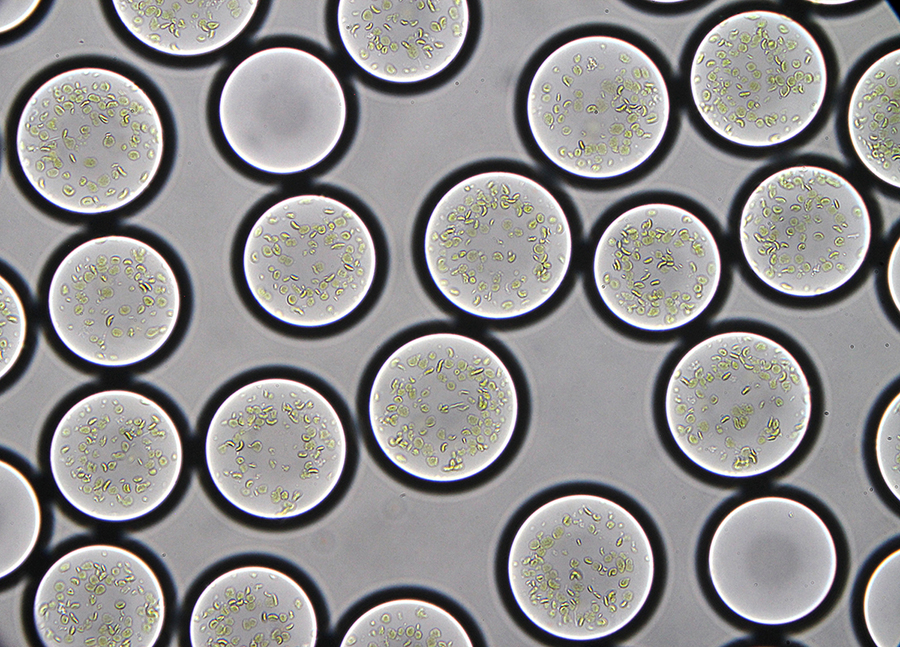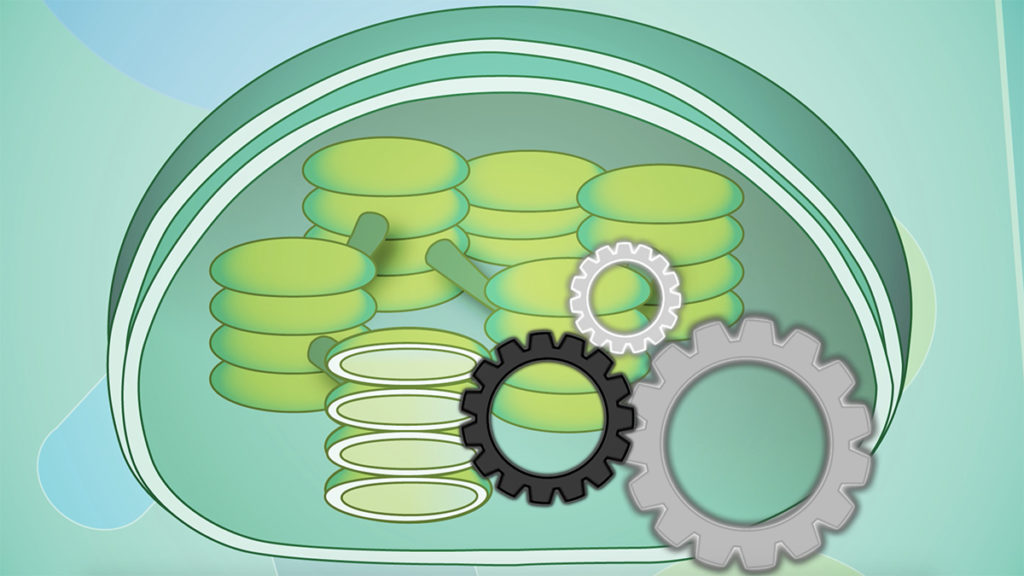Contacts
PI Contacts
PI Contact
Tobias J. Erb
Director, Max Planck Institute for Terrestrial Microbiology
[email protected]

Chloroplasts are the factories in plant cells. Using photosynthesis, they take raw materials including sunlight, carbon and water, to convert them into energy that is then stored. A team led by researchers at the Max Planck Institute (MPI) for Terrestrial Microbiology and the University of Bordeaux have developed a platform that mimics chloroplast function within a cell-sized system.
Photosynthesis harnesses carbon captured from the atmosphere in a process that generates energy. The MPI team ultimately aims to develop an artificial photosynthesis pathway that would more efficiently remove carbon from the atmosphere than current natural processes and use it as a sustainable resource for making high-value bioproducts. As a step toward the long-term goal, researchers are now able to automate and fabricate synthetic chloroplasts. The artificial chloroplast platform allows researchers to mass produce identical droplets that serve as reaction chambers, and also allows them to test composition variants.
In the May 8, 2020 issue of Science, a team led by Tobias Erb, director of the MPI for Terrestrial Microbiology, successfully combined synthetic biology and microfluidics to develop a platform that mimics chloroplasts, a step toward an artificial photosynthetic cell. The work is part of a long-term effort to capture and utilize the excess carbon from the atmosphere for producing high value bioproducts. Global temperatures have been rising caused by high levels of carbon dioxide in the atmosphere.

The work was enabled in part through the Community Science Program (CSP) of the U.S. Department of Energy (DOE) Joint Genome Institute (JGI), a DOE Office of Science User Facility located at Lawrence Berkeley National Laboratory (Berkeley Lab). Supporting the Erb lab through the CSP Functional Genomics call, the JGI synthesized library of genes that code for Enoyl-CoA Carboxylase/Reductase (ECR) enzyme variants. ECR enzymes are capable of fixing CO2 many times faster than RuBisCo, the most common CO-2 fixing enzyme in nature. The library provided the Erb lab with enzymes that led to a previously reported synthetic CO2-fixation pathway called the “CETCH cycle.” The library remains a foundational asset that allows them to innovate by screening for well-performing CO2-fixing enzymes and other parts that can be further explored for novel functions.
In the current study, the team combined the CETCH cycle with a microfluidics platform that mimics the metabolically active microcompartments where photosynthesis takes place. The result: an integrated platform that mimics the photosynthetic process in a cell, from capturing and fixing carbon dioxide to generate multi-carbon compounds through a light-driven process.
The JGI’s CSP Functional Genomics call is open year-round, and reviews submissions twice a year. Proposals submitted by July 30, 2020 will be considered in the next review.
PI Contact
Tobias J. Erb
Director, Max Planck Institute for Terrestrial Microbiology
[email protected]